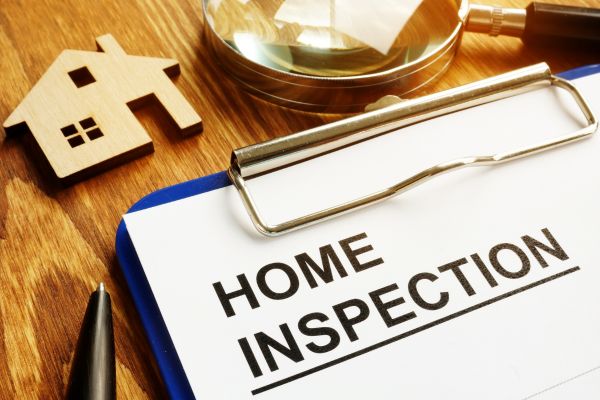Buying a home is one of the most significant investments you’ll ever make. It’s a thrilling journey, filled with anticipation, dreams, and expectations. However, beneath the surface charm of a potential property could lie hidden issues that may lead to future headaches. This is where the importance of a comprehensive home inspection checklist becomes undeniable. A well-executed inspection can be the difference between a wise purchase and an unfortunate financial burden.
Understanding the Importance of a Home Inspection Checklist
When you’re in the process of buying a home, it’s easy to fall in love with curb appeal, updated kitchens, or spacious backyards. However, a visually appealing property doesn’t always guarantee structural soundness or functional systems. A home inspection checklist serves as a crucial tool to assess every part of the property, from foundation to roof, and everything in between. It ensures that you’re not just buying a house, but making a secure and informed investment.
This checklist guides the inspector—and by extension, you—through each area of the home, offering a systematic approach to evaluating the condition and identifying any potential issues. Without such a detailed framework, critical defects could easily go unnoticed until it’s too late.
Exterior Evaluation: The First Layer of Defense
A comprehensive home inspection checklist begins with the home’s exterior. This includes the siding, paint, foundation, grading, and the condition of the driveway and walkways. These elements play a vital role in protecting the home from environmental damage. If drainage is poor, for instance, water could seep into the foundation and create major issues over time. Inspectors also evaluate the condition of windows and doors, ensuring they’re not only functioning properly but also sealed to prevent energy loss.
Roof condition is another critical part of this stage. Missing shingles, damaged flashing, or sagging gutters might signal deeper problems that could be costly to fix. Evaluating the roof’s age and integrity is essential, especially since repairs or replacements can be one of the most expensive aspects of homeownership.
Interior Inspection: Looking Beyond the Aesthetic
While the interior may dazzle at first glance, a home inspection checklist ensures a thorough analysis of the home’s core systems and structures. Walls, ceilings, and floors are examined for cracks, stains, or warping that might indicate water damage or structural shifting. These seemingly small details can point to more significant problems lying beneath the surface.
The inspection also covers all windows and doors from the inside, testing for proper alignment, locks, and operation. Improperly functioning windows could lead to energy inefficiency, while doors that don’t close properly may suggest foundational issues.
Inspectors also look closely at insulation and ventilation, particularly in attics and crawl spaces. Adequate insulation is essential for energy efficiency, while proper ventilation prevents moisture buildup that can lead to mold and mildew.
Plumbing and Electrical Systems: The Lifelines of the Home
One of the most vital parts of the home inspection checklist is evaluating plumbing and electrical systems. A home may look flawless, but outdated or faulty wiring can pose serious safety hazards. Inspectors examine the electrical panel, circuit breakers, outlets, and light fixtures to ensure they’re functioning safely and up to code.
Plumbing inspections involve checking all pipes, drains, faucets, and water heaters. The goal is to identify leaks, corrosion, water pressure issues, or inadequate hot water supply. These problems, if left unchecked, can lead to water damage or higher utility bills. Even a seemingly minor leak can be indicative of larger issues behind the walls or under the floors.
HVAC Systems and Appliances: Ensuring Comfort and Efficiency
Heating, ventilation, and air conditioning systems are essential for year-round comfort. As part of the home inspection checklist, the inspector will test the HVAC system’s performance and assess its age and condition. A malfunctioning system may not only result in discomfort but also represent a substantial financial burden if a replacement is needed.
In homes with included appliances, the inspector will typically assess the operation and condition of items such as ovens, dishwashers, washers, and dryers. While these aren’t always deal-breakers, knowing their status can help buyers plan for replacements or negotiate with the seller.
Structural Components: The Backbone of the Property
Arguably the most important element of the home inspection checklist is the assessment of structural integrity. This includes the foundation, beams, joists, and load-bearing walls. Any signs of shifting, cracking, or bowing could suggest serious issues that might compromise the safety and longevity of the property.
Inspectors will also look at the basement and crawl spaces for signs of water intrusion or pest infestations. These areas often go unnoticed by homebuyers but are critical to understanding the complete condition of the home.
Safety Features and Compliance
A responsible home inspection doesn’t just look for damage; it also ensures the home meets current safety standards. This includes checking smoke detectors, carbon monoxide detectors, handrails, and staircases. An effective home inspection checklist also accounts for possible environmental hazards such as asbestos, lead-based paint, or radon, depending on the age and location of the home.
Such checks aren’t just bureaucratic; they are essential for the long-term safety and well-being of the home’s occupants.
How a Home Inspection Checklist Empowers Buyers
Armed with a thorough home inspection checklist, buyers are in a much stronger position during negotiations. If significant issues are uncovered, they may request repairs or price reductions, or even walk away from a deal that carries too much risk. The checklist fosters transparency and allows buyers to make decisions based on facts rather than emotions.
Furthermore, understanding the state of the home helps buyers prioritize future maintenance and budget more accurately. Even if no major flaws are detected, minor recommendations can guide a new homeowner in maintaining the property effectively.
The Role of Professional Inspectors and Personal Involvement
While a licensed inspector will lead the process, buyers are encouraged to be present during the inspection. Observing the process firsthand and asking questions can provide valuable insights that no report alone can fully convey. The home inspection checklist becomes even more powerful when the buyer takes an active role, learning about the property’s systems and understanding how to care for them in the years ahead.
It’s also important to remember that no home is perfect. Almost every property will yield at least a few notes on the inspection report. The purpose of the checklist is not to discourage the purchase, but to equip buyers with the knowledge to make the right decision.
Conclusion: Making Confident Homeownership Decisions
A detailed home inspection checklist is an indispensable part of the home-buying process. It offers clarity, reduces uncertainty, and empowers buyers to move forward with confidence. From the condition of the roof to the functionality of the HVAC system, every detail matters when it comes to protecting your investment and your peace of mind.
In the end, a house is more than just bricks and mortar. It’s a place where lives unfold and memories are made. With a solid home inspection checklist in hand, you’re not just purchasing property—you’re securing a safe, sound, and happy future.







